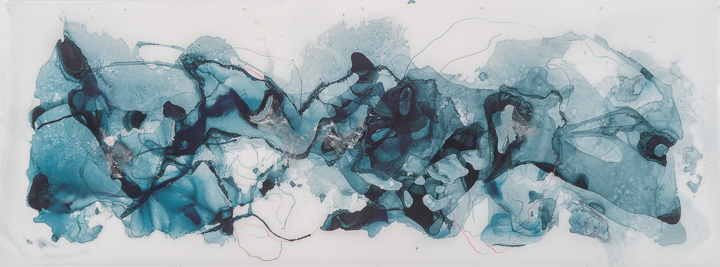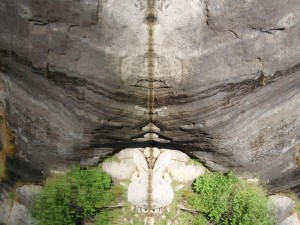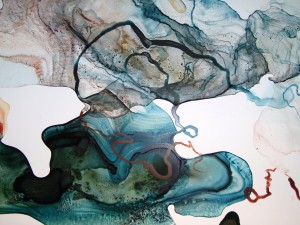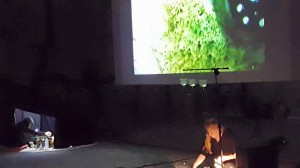2015 – 2021

My practice is to draw inspiration from nature and map the responses within the body, or draw inspiration from the body and overlay it with movement in nature. I experiment with somatically drawn line and pouring – which creates accidental fluid markings. Subtext is layered and woven into the work, from Understory expressing grief over lost forests in California due to drought and fire, Red Heart Blue Heart layered with grief – both personal and political, or Shift reflecting on glaciers as endangered animals. The pieces themselves remain open and unbound by what was put into them.
2015
New Directions: In collaboration with Cheryl E. Leonard, the pouring practice has gone live. With two performances this year, the investigation of flow becomes time-based to accompany originally composed music played on natural-materials instruments.
2013 – 2014
My work has been somatically based for over 20 years. This means that I source from my body’s experience, rather than visually, from image. I play with image once a piece gets going, but I am interested in the translation from somatic to visual, and I use drawing and pouring as means of inquiry. Somatic ‘thought’ – or the mind of the body – guides this experiment. The Pourings explore flow patterns suggesting both inner and outer nature.
2010 – 2012

These pieces explore perception. Starting with photographs of rocks reflecting in water, the image immediately becomes open to interpretation when the horizon line is turned. Bilateral symmetry suggests life forms. The overlap of outer nature and inner nature speaks to our integral part in the scheme of things. The body emerges during embryology through a process of unfolding. Three dimensional form, organized around geometrical planes, is generated out of organic codes and fluid dynamics. There are structures in our bodies that still reflect this process, and in other ways we continue to unfold.
2004 – 2009

This period of work was inspired by estuaries. I traveled by kayak and on foot up sloughs, along shores, among reeds and through mud to study wetlands. In the studio I explored flow patterns, saturation, and sedimentation in liquid media. Water, salt, mud, and reeds became art materials. The rhythmic exchange between land and water gives us a rich metaphor for dynamic equilibrium. The cyclic nature of tidal marshlands is a reflection of our own cycles and rhythms. Estuaries are a mix of salt and fresh water, similar to our own intercellular fluid. How does flow create form? The images that emerge from flow patterns reflect our cellular structure as much as the shape of estuaries.
A series of multi-sensory installations with hanging panels were touchable, responded to the viewer’s movements, and in some cases could be walked upon. The scroll form suggests story or language; the images invite a journey through their details. Pendulums and other kinesthetic sculptures speak more literally about the cycles of the moon and tides, and the movements of water and mud, and the migratory pathways of birds.
I am suggesting a different view of ourselves, our inner nature, and our relationship to outer nature. Our control of nature in agribusiness and development has been paralleled by our fragmented and controlling view of our bodies and our health. The health of our waterways is one of the most important ecological concerns facing us. With my artwork I want to invite a perceptual shift: self-recognition and embracing our fluid nature can potentially change the way we regard both our own health and the health of our environment.
1990 – 2004
These drawings emerge out of an investigation with drawing as a means of mapping and a crucible for inquiry: what is it to be a soul with a body? Can I record the experience accurately rather than “realistically”? The body experienced is a very different body from the one that we can see with our eyes. This process of questioning perception seems to tap into a collective body and a collective mind with infinite guises and expressions.
I work with both hands, and sometimes with eyes closed — less a drawing technique than a drawing foray or approach. Drawing with two hands brings in the whole body-mind, and the visual result is an odd, liquid 3-dimensionality, similar to vision with two eyes, but with a different sense of form and space. Drawing in this way reveals but doesn’t name. I call my approach “Somatic Drawing” (“somatic” refers to the body as a multi-layered experience). Presence in the act of drawing brings a presence to the image.
Paper seems to hold so much about the human need to communicate. Paper is still made of the most basic natural materials. It is like skin, and it is related inextricably to the ancient roots of language. Drawing also shares its roots with written words and characters. To make a mark has meaning, even if the meaning is not known before the mark is made. Drawing is an open language, unavoidably human and culturally eclectic. The naked mark on paper is the essence of our longing to connect.



